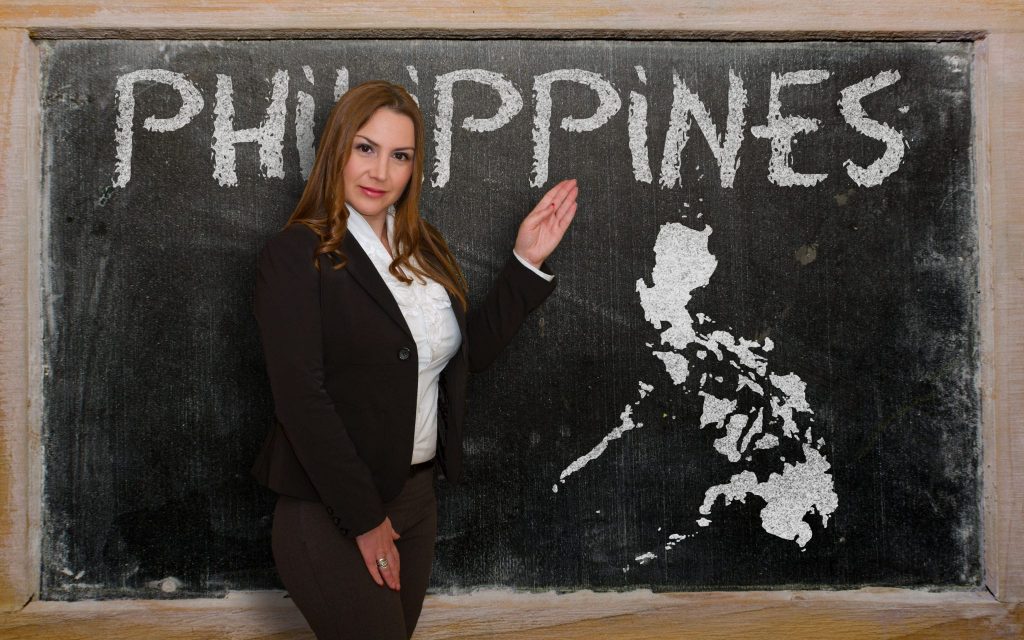
Recent K-12 reviews of education system in Philippines show progress but country still has a long way to go.
Until 2011, K through 12 education had not been compulsory within the island nation of the Philippines. Up until that time, education was only provided for ten years for those students who chose to attend. Since the new laws have gone into effect, K-12 reviews on the educational system within the Republic of The Philippines have shown both promise and problems.
What is working in the education system in the Philippines?
The new program of compulsory education in the Philippines rolled out in 2012. It places a high value on kindergarten, where it is currently focusing most of its efforts. Every child who is old enough to attend kindergarten is now required to go to school. As this cohort moves through the curriculum, efforts on succeeding grades will increase in intensity.
With its rich history of higher education, the fact that basic education for all members of the population has been lacking has provided the drive for these reform efforts to succeed. The primary focus is to create workers capable of joining the global economy and reducing the high rates of poverty that it’s population currently maintains. In general, urban students from high income families have historically received more education that low income rural students.
- Increase in the Amount of Time in School
The new K-12 program in the Philippines has extended the length of time that students remain in school by two years. These additional years allow students to gain the higher level analytic skills required in the more technologically focused future. While the process of developing the curricula for the 11th and 12th grades remains underway, the earliest signs are encouraging. This places the Philippines into closer alignment with the educational systems of developed nations.
- Focus on Curriculum
Due to the additional years added to compulsory education, a once compressed curriculum now has more time for students to study and comprehend more complex problems. Instead of being deemed unfit for study at international tertiary educational institutions, Philippine students are more likely to be prepared and accepted. K-12 reviews indicate that early results are good within this area.
The new focus of the amended curriculum is more holistic than the prior Basic Skills program that had been in effect. Students focus on innovative thought processes, communication skills, and the technology basics that will better prepare them for the 21st century work place. Of course, these changes begin in the earliest years of school.
- Free Education for All Students
A significant change is that education is now free and that entering kindergarteners are treated to a new curriculum that takes their rapidly expanding brain into consideration. This grade is considered critical for later educational success. While the program is looking good, the first graduates from the revised program won’t be around until 2018. We’ll have to wait to find out if the early high hopes are warranted.
Common Challenges in K-12 Education in the Philippines

- Poverty is a Serious Issue
One of the greatest impediments to success with the new educational reforms in the Philippines is the lingering poverty within the nation. While students are expected to study more in order to succeed, more support may be required when the education has not been a primary focus within the region. Most K-12 reviews give the reform movement high marks for choosing the best educational theories that the world has to offer but there are lingering worries that some segments of the population may be still be left behind.
Since the secondary education in the Philippines will be focused on later on in the process, currently enrolled students won’t be seeing many of the positive changes while they are in school. There is a fear that when changes are introduced, students who prepared under the old system may not be able to keep up. At present, there is no clear cut plan to take care of this group within the program.
- Students Face Pressure to Succeed in School
A typical Filipino citizen generally has only one way to climb the economic ladder. That ladder has traditionally been provided by getting a good education. This sense within the country means that study is respected within the larger community. Since the new curriculum will require substantially more study time for the average student, the respect for education is expected to lend support to the educational reforms in the country.
However, this focus on education can also lead to additional stress on students as they enter the higher grades. With its limited number of places within national colleges and universities, competition within the schools is heating up and high school students experience more stress and less pleasure as they near graduation. As the world increasingly moves towards credentials, perhaps the Philippines should take steps to help more of their young citizens find an institution of higher learning after graduation.
In general, the earliest signs are that the K-12 reform in the Philippines is working well. With solid educational theory leading the way and an extended curriculum, the Philippines hopes to reduce poverty within its borders by increasing eduction.